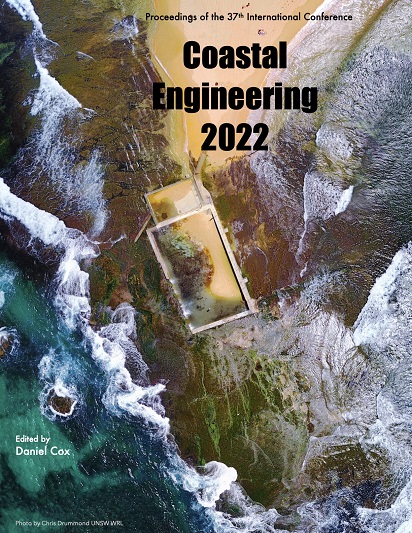Abstract
Typhoon-induced high waves and precipitations cause severe flood damage in low-lying coastal areas. Typhoon Jebi (2018) induced a compound flood at Kansai Airport by stormy waves, and seawater reversed flow through sewer systems. However, the cause of damage at Kansai Airport has been presented incompletely in various studies that analyzed individual flood factors and simply summed each result. A valid method for simulating the compound flood has not yet been established due to insufficient discussions. It means that we might encounter serious difficulties in adequately addressing the potential compound flood risk in the future. Therefore, this study validates the applicability of the compound flood simulation model by reproducing the flooding process of Kansai Airport. A series of numerical experiments were conducted to reproduce Jebi-induced inland flood at Kansai Airport by using a coupled coastal flood model of the storm surge, high wave, wave overtopping/runup, precipitation, and sewer backflow (Jo et al., 2021).References
Jo, Kim, Mase, Mori and Tsujimoto (2021): Development of a coupled coastal flood model of surge, wave, precipitation and sewer backflow for urban area. Journal of JSCE, Ser. B2, Coastal Eng., 77(2), pp. I_253-I_258.
Kim, Yasuda and Mase (2008): Numerical analysis of effects of tidal variations on storm surges and waves. Applied Ocean Research, 30, pp. 311-322.
Yuhi, Mase, Kim, Umeda and Altomare (2021): Refinement of integrated formula of wave overtopping and runup modeling. Ocean Engineering, 220, pp. 108350.

This work is licensed under a Creative Commons Attribution 4.0 International License.
Copyright (c) 2023 Junbeom Jo, Sooyoul Kim, Hajime Mase, Nobuhito Mori, Gozo Tsujimoto

